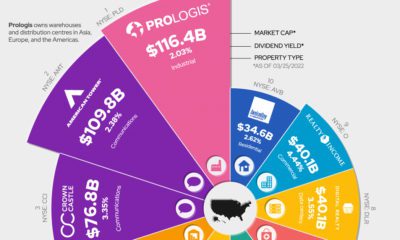And if that’s the case, we don’t blame you—the world of investing can feel like an intimidating place, especially if you’re relatively new to the scene. So for those looking to learn the basics of stock trading, this video by TED-Ed is a good place to start. We touch on some key takeaways from the video below, like why stock prices fluctuate, how investors choose which stocks to purchase, and differences between active and passive investing.
Stocks, and Why Prices Fluctuate
If you’re still reading this, we’re going to assume you’re fairly unfamiliar with the world of stocks. So let’s start with the basics—what even is a stock? A stock is a partial share of ownership in a company. Units of stock are called “shares,” and these are mostly traded on stock exchanges, like the New York Stock Exchange (NYSE) or Nasdaq. The price of a stock is determined by supply and demand, or the number of buyers versus sellers. When there are more buyers than sellers, the price increases. On the flipside, if there are more sellers than buyers, the price goes down. Essentially, a company’s stock price is a reflection of how much investors think a company (or a portion of a company) is worth. That’s why a company doesn’t actually need to make profit to be valued by the market—investors simply need to have faith that it’ll become profitable eventually. Because of the speculative nature of stocks, prices can fluctuate quickly and drastically, depending on public perceptions.
Passive Investors vs. Active Investors
So how do investors choose which stocks to purchase? Well, there are two main styles of investing—active and passive:
Active investors try to beat the market by purchasing shares they believe are undervalued, with the intent to sell once price goes up Passive investors track the market, and tend to hold onto their stocks with the belief that over time, their value will increase
In the U.S., there’s a fairly even number of passive versus active investors—in 2019, about 45% of assets in U.S. stock funds were managed passively. And while active investors have the potential to make a lot more money, passive investments have generally shown higher returns in the last decade.
Active Investors: Picking a Stock
Despite the risk involved (or perhaps because of it) many investors choose to actively manage their stocks. To assess a company’s potential value, and ultimately find undervalued stocks, an active investor may:
Investigate a company’s business operations Review its financial statements Track price trends, with the goal of finding a company that’s undervalued
An active investor may also choose to put money in one or more actively-managed funds, or simply hire a financial planner to do the work on their behalf.
Finding your Comfort Zone
Since there are pros and cons to both styles of investing, how you decide to invest, and where you fall on the investment continuum, ultimately depends on your expectations, risk tolerance, and long-term goals. It’s also worth noting that these investment styles aren’t mutually exclusive—a combination of both can be used in order to cover all your bases. on Last year, stock and bond returns tumbled after the Federal Reserve hiked interest rates at the fastest speed in 40 years. It was the first time in decades that both asset classes posted negative annual investment returns in tandem. Over four decades, this has happened 2.4% of the time across any 12-month rolling period. To look at how various stock and bond asset allocations have performed over history—and their broader correlations—the above graphic charts their best, worst, and average returns, using data from Vanguard.
How Has Asset Allocation Impacted Returns?
Based on data between 1926 and 2019, the table below looks at the spectrum of market returns of different asset allocations:
We can see that a portfolio made entirely of stocks returned 10.3% on average, the highest across all asset allocations. Of course, this came with wider return variance, hitting an annual low of -43% and a high of 54%.
A traditional 60/40 portfolio—which has lost its luster in recent years as low interest rates have led to lower bond returns—saw an average historical return of 8.8%. As interest rates have climbed in recent years, this may widen its appeal once again as bond returns may rise.
Meanwhile, a 100% bond portfolio averaged 5.3% in annual returns over the period. Bonds typically serve as a hedge against portfolio losses thanks to their typically negative historical correlation to stocks.
A Closer Look at Historical Correlations
To understand how 2022 was an outlier in terms of asset correlations we can look at the graphic below:
The last time stocks and bonds moved together in a negative direction was in 1969. At the time, inflation was accelerating and the Fed was hiking interest rates to cool rising costs. In fact, historically, when inflation surges, stocks and bonds have often moved in similar directions. Underscoring this divergence is real interest rate volatility. When real interest rates are a driving force in the market, as we have seen in the last year, it hurts both stock and bond returns. This is because higher interest rates can reduce the future cash flows of these investments. Adding another layer is the level of risk appetite among investors. When the economic outlook is uncertain and interest rate volatility is high, investors are more likely to take risk off their portfolios and demand higher returns for taking on higher risk. This can push down equity and bond prices. On the other hand, if the economic outlook is positive, investors may be willing to take on more risk, in turn potentially boosting equity prices.
Current Investment Returns in Context
Today, financial markets are seeing sharp swings as the ripple effects of higher interest rates are sinking in. For investors, historical data provides insight on long-term asset allocation trends. Over the last century, cycles of high interest rates have come and gone. Both equity and bond investment returns have been resilient for investors who stay the course.













